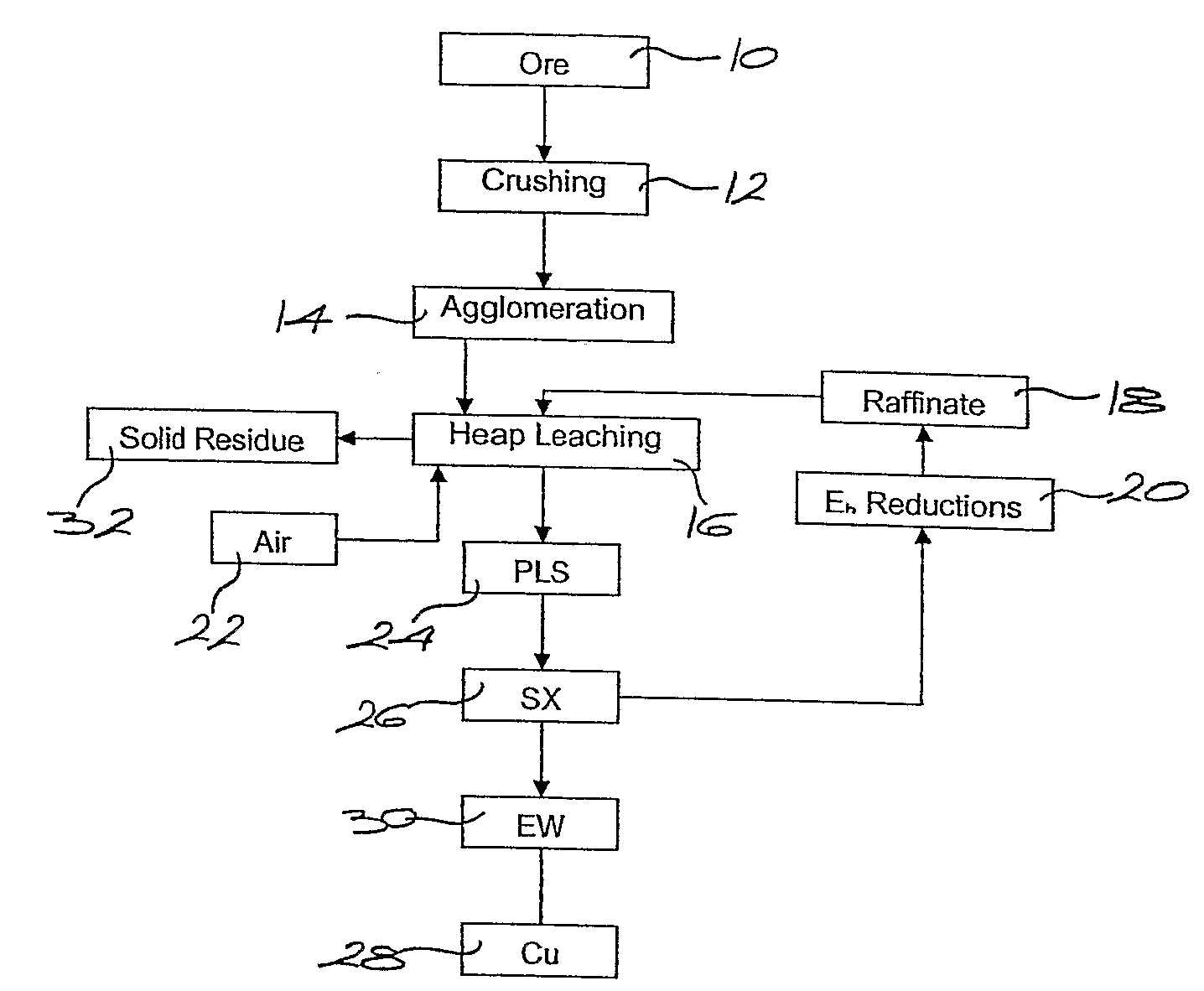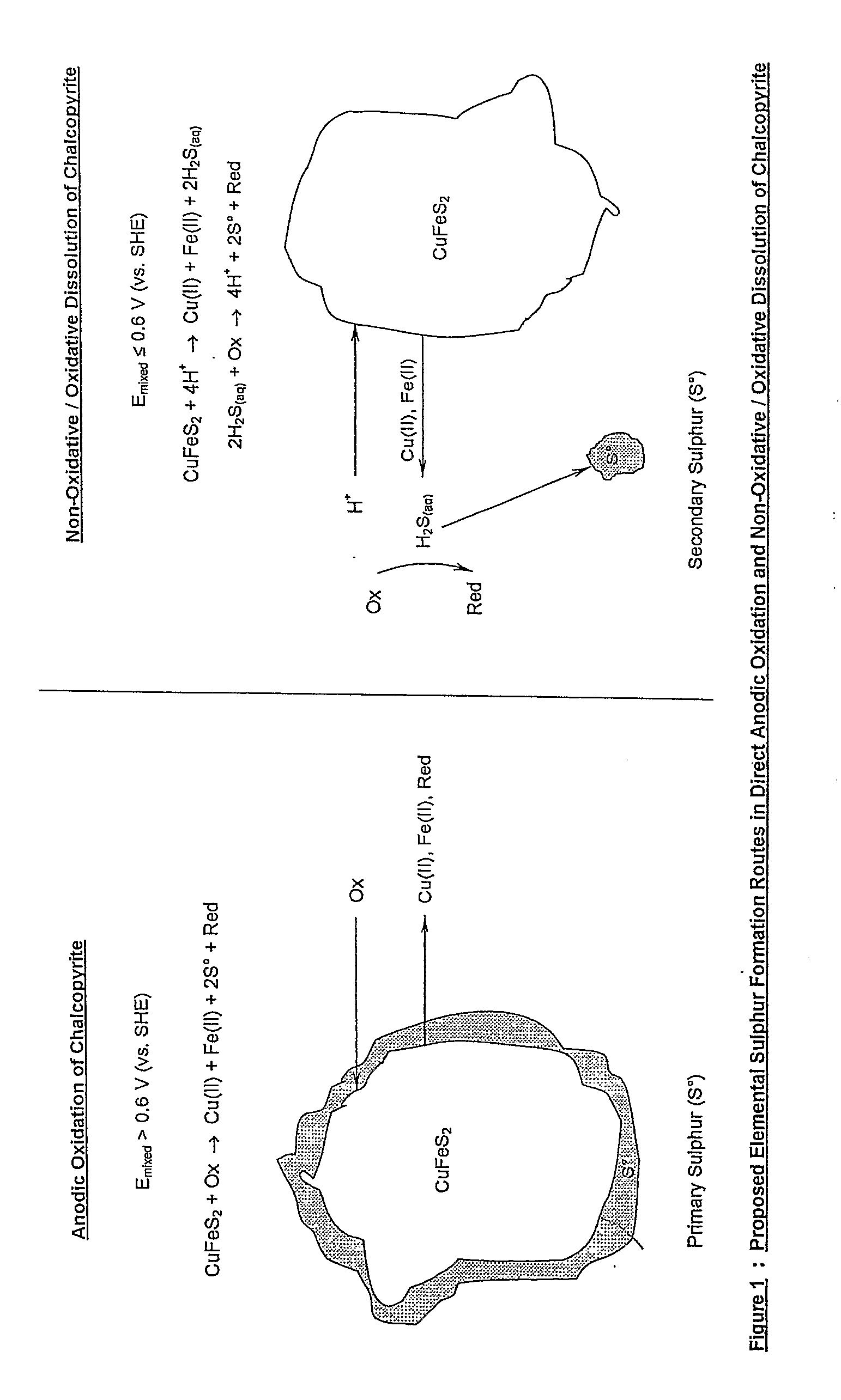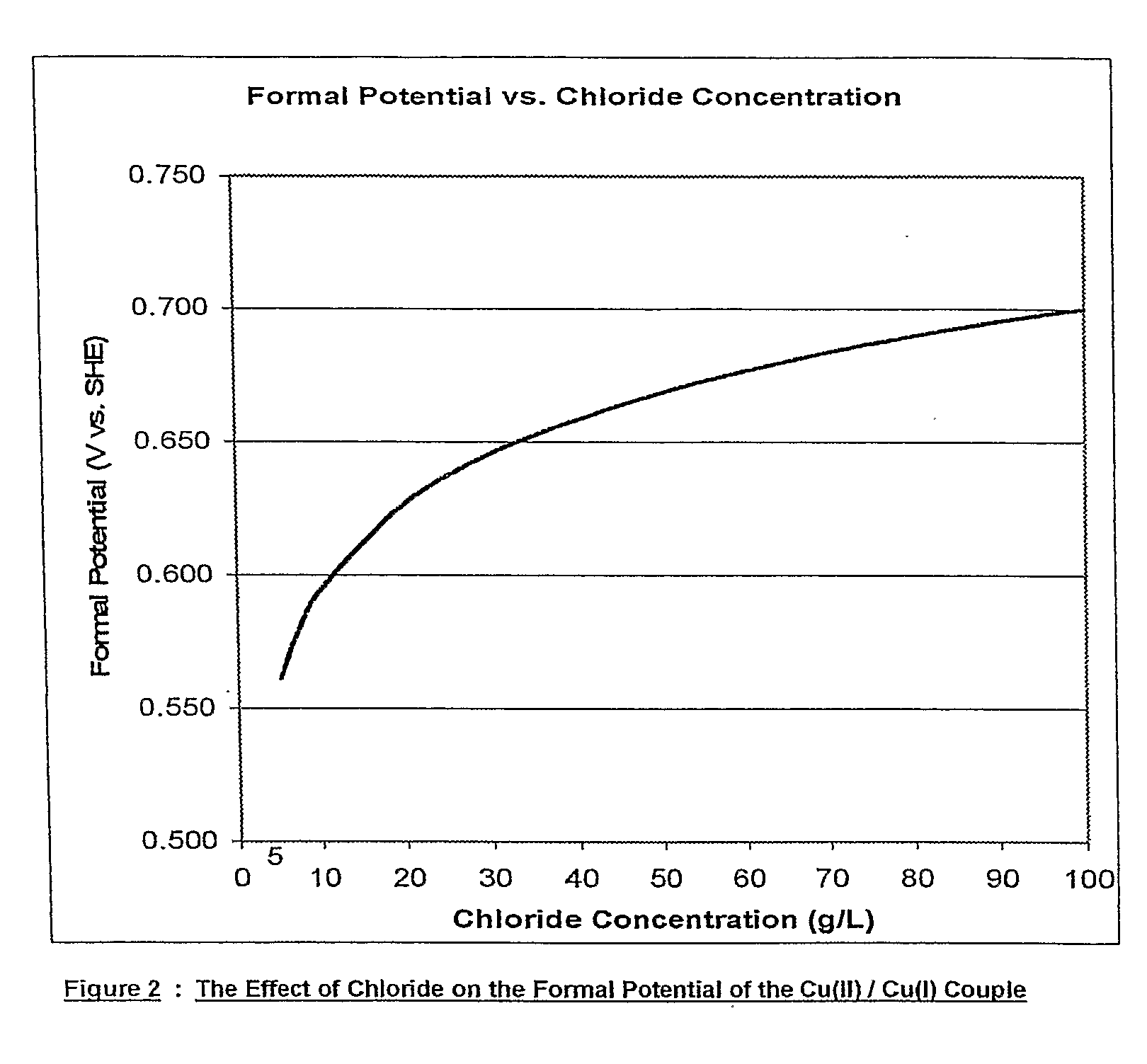Chloride Heap Leaching
a technology of chloride heap and leaching, which is applied in the direction of dissolving, separation processes, copper sulfates, etc., can solve the problems of copper recovery from a low-grade, transitional and hypogene ore, and insufficient pyrite to generate a heap temperature for moderate thermophile or thermophile bioleaching, and achieve low potential and high potential
- Summary
- Abstract
- Description
- Claims
- Application Information
AI Technical Summary
Benefits of technology
Problems solved by technology
Method used
Image
Examples
example 1
The Effect of Solution Potential
[0087]Two batch leaching tests were conducted on a fine-milled, chalcopyrite-bearing concentrate (Conc. A) in 1 L glass beakers. The reaction mixtures or slurries of these each contained a solids concentration of 10 g / L and mixing of the slurry was achieved by magnetic stirring. Furthermore, the slurries were exposed to atmospheric air and regulated at 20° C. The acidity was controlled at pH 0.5 by the addition of 98% concentrated sulphuric acid (H2SO4) when required. The solution potential was not controlled.
[0088]The objective of these tests was to investigate the effect of solution potential, more specifically the effect of high against low potential, on the rate of chalcopyrite dissolution. For this purpose, Test I's solution contained only acid (98% H2SO4), distilled water and sodium chloride (NaCl) to render a low potential, whereas Test II's solution also included ferric sulphate (Fe2(SO4)3) to render a relatively high potential. The details of...
example 2
The Effect of Dissolved Oxygen
[0090]A series of batch leaching experiments were executed to test the effect of dissolved oxygen on the rate of chalcopyrite dissolution at low solution potential (in absence of ferric ions) and high solution potential (in presence of ferric ions). These were conducted on a fine-milled, chalcopyrite-bearing concentrate (Conc. B) in 100 mL shake flasks. The slurries each contained a solids concentration of 1 g / L and mixing was achieved by shaking the flasks at 200 rpm on an orbital shaker, in a temperature-controlled incubator.
[0091]Gaseous nitrogen, saturated with water vapour, was sparged into those slurries, which needed to be purged of dissolved oxygen. This was accomplished by sparging the gas into the slurry via two injection needles, which were inserted through a rubber septum that sealed off the flask. The slurries that did not need to be purged of dissolved oxygen were closed with a cotton wool stopper.
[0092]The details of the test conditions, ...
example 3
The Effect of Controlled Solution Potential in the Presence of Dissolved Oxygen
[0103]The effect of controlled solution potential on the rate of chalcopyrite dissolution, in the presence of dissolved oxygen, was investigated:[0104]to confirm whether potential is a key driver in leaching chalcopyrite successfully in chloride or chloride / sulphate mixed systems; and, if so[0105]to define the potential range for optimum chalcopyrite leaching.
[0106]For this purpose, batch leaching experiments were initiated on a fine-milled, chalcopyrite-bearing concentrate (Conc. A) in 1 L glass reactors. Each reactor was fitted with baffles and sealed with a multi-port, poly-vinyl chloride lid, which supported a variable-speed, stirrer motor to drive an impeller to mix the slurry. Each reactor was also equipped with a redox sensor, glass sparger and inlets for sparging air, nitrogen or oxygen. The redox sensor measured the solution potential of the slurry, which was controlled to a set point value by me...
PUM
| Property | Measurement | Unit |
|---|---|---|
| surface potential | aaaaa | aaaaa |
| chloride concentration | aaaaa | aaaaa |
| surface potential | aaaaa | aaaaa |
Abstract
Description
Claims
Application Information
 Login to View More
Login to View More - R&D
- Intellectual Property
- Life Sciences
- Materials
- Tech Scout
- Unparalleled Data Quality
- Higher Quality Content
- 60% Fewer Hallucinations
Browse by: Latest US Patents, China's latest patents, Technical Efficacy Thesaurus, Application Domain, Technology Topic, Popular Technical Reports.
© 2025 PatSnap. All rights reserved.Legal|Privacy policy|Modern Slavery Act Transparency Statement|Sitemap|About US| Contact US: help@patsnap.com



